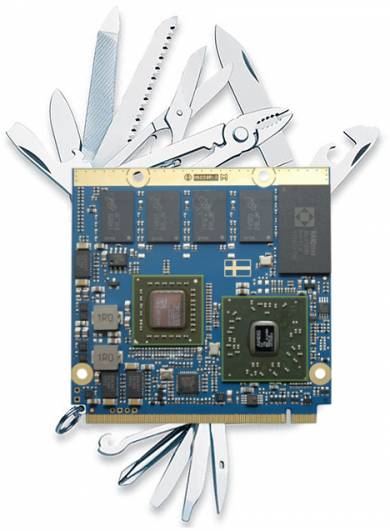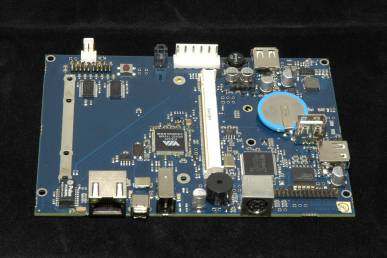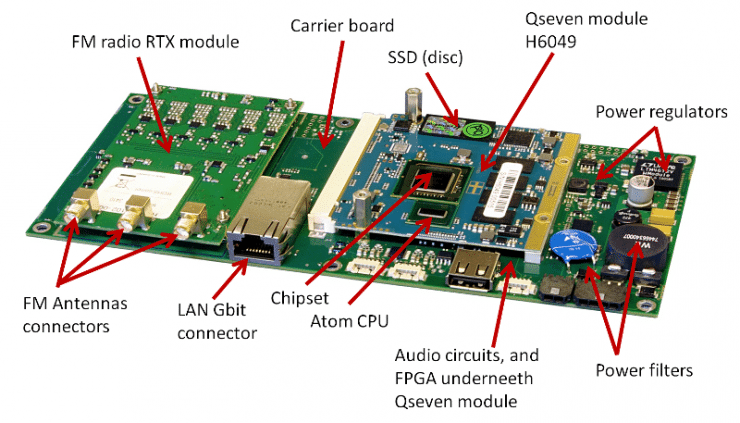Qseven - Computer-on-Module - Technology Overview


A couple of COM module form factors compared in size.


The system hardware is a semi-custom design including a carrier board with audio circuits and an FPGA, an FM Radio RTX Module developed by Generic and the Hectronic H6049 Qseven Module with Intel® Atom™.

The system hardware is a semi-custom design including a carrier board with audio circuits and an FPGA, an FM Radio RTX Module developed by Generic and the Hectronic H6049 Qseven Module with Intel® Atom™.
The Hectronic H6071 is a COM module in the Qseven form factor based on the low power processors AMD Embedded G-series, single and dual X86 cores respectively and the Radeon 8000 GPU. The Qseven form factor makes H6071 a legacy free module with a full range of contemporary low voltage differential serial interfaces such as PCI Express, USB 3.0 and display interfaces such as DisplayPort, HDMI, DVI and Dual 24-bit LVDS. Qseven modules are defined for low cost and ruggedness, with an MXM type edgecard connector interfacing the carrier board. H6071 has soldered memory and optional on-board SSD.